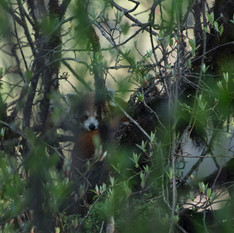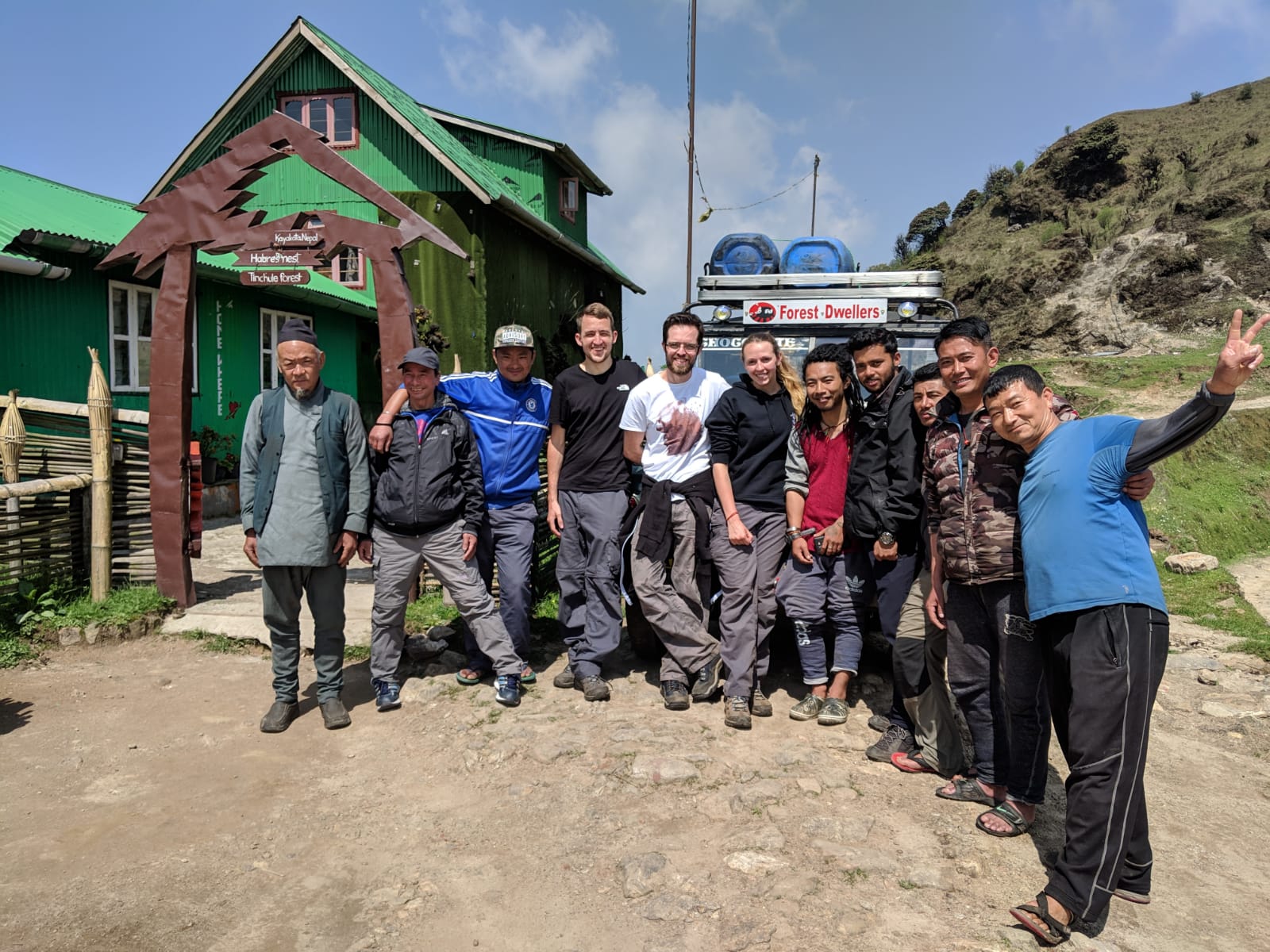Rhino's and Red Panda's
- Shannon Farrington
- Oct 7, 2019
- 6 min read
Updated: Jan 13, 2021
The journey started in Assam, North- east India, a state known for its wildlife, archaeological sites and tea plantations. We flew into Guwahati and drove for 4 hours directly towards Kaziranga national park. This park is home to two-thirds of the remaining greater one horned rhinos in the world so of course that's what we were searching for on our first jeep safari. We arrived late in the evening to our accommodation at Mukti maison de invites, a little known spot with several rooms, each suitable for 3 people near the central range of the national park. At first our accommodation was a little difficult to pinpoint as it wasn't the best sign posted but once you knew were to park, it could have been easier. I would highly recommend staying here or at least getting in touch with the owner Vicky.
Vicky could not have taken better care of us and literally made this trip a once in a lifetime.
We went straight out for dinner as soon as arriving and he asked us what we wanted to see and how exactly to find it. He personally carried out all but one of our tours (due to his high demand and expert guiding skills) and was fantastic. I would highly recommend heading over to the Mad Bro's Facebook page to check out some of his work.
Kaziranga was a spectacle of a national park with rhino as far as the eye can see, no wonder its such a strong hold for such a large population.

Alongside the rhino, we had an array of other spectacular wildlife sightings, including the capped langur, greater hornbill and wild Asian elephant.
Overall there was a whole host of incredible animals especially birds, and each sector was home to an animal that you may struggle to find elsewhere meaning there was always the potential to see something new on every game drive. Other animals that we encountered included; otters, bee-eaters, hog deer, Asiatic water buffalo, eastern swamp deer, sambar, Indian muntjac, wild boar and assamese macaque to name a few. Not only were we met by such amazing creatures, we got some of the best displays of natural behaviour of any trip so far.
Whilst in Kaziranga, and with a handy 4x4 at our disposal we decided to head toward Hoollongapar Gibbon sanctuary to see if we could chance our luck at getting a decent view of the Hoolock Gibbon (Hoolock hoolock). Although we had often heard them at one of the vectors of Kaziranga NP, we had only caught at most a glimpse of a shadow. This time we got our camera gear at the ready and spent the entire day looking for them, it didn't take long thanks to one of the guides, we soon wandered off the beaten track into the dense forest.
Of course an armed guard followed us each step of the way as Hoollongapar, although small, still contains a population of wild elephants, the grasses are tall, in some parts over 2-3 meters and this time there's no jeep to keep you safe, its foot traffic all the way. Never the less, we came across a pair of gibbons, singing with their offspring and were delighted. I must say though, as much as I adore the sound of a gibbon singing in the early morning, the hoolock have one of the higher pitched, squeakier gibbon calls.
As well as visiting the gibbon centre in search of some elusive primates, we also ventured towards the Brahmaputra in search of a species of river dolphin. Apart from the excessive noise from the boats, the pure pollution from the surrounding machinery and the noise and infrastructure, it was the perfect place to find a dolphin.... Photographing them on the other hand. Damn right impossible. You never know when or where they will appear and of course when you happen to line up your camera by chance, you can bet that it wont be focusing on the right place. Anyway this is as good as it gets for the dolphins I'm afraid..

From Assam, we boarded the plane and headed North towards the India/Nepal boarder and into the mountains. This time we needed all the help we could get and booked onto a tour with Habre's nest. Although this was the most expensive part of our trip, and one of the most expensive trips we have had to date, it was the cheapest viable option to see the red pandas. Something we had longed to see. The Habre's nest team were amazing. We literally could not have asked for more. Just the location alone, high up in the scenic Himalayas was enough to make it stand out from our usual forest shack.

The owner Shantanu made sure everyone was looking after us, always checking in to see what we had found and giving us the best suggestions of were to go and what to see. He also owns another location called Baghrol Basa, home to some of the best fishing cat viewing in India. Sadly we didn't have long enough on our trip to add a few days in search of the elusive felines. Secondly Mridulkanti, our naturalist, he would take us on walks to and from the accommodation looking for everything and anything we could find. If you want someone who knows his birds, he's your man. But it doesn't stop at birds he's a great all round naturalist and does his best to keep the guests happy. He told us the best times to sit in the hide and look for martens which of course paid off!
However nothing could prepare us for the weather that we endured that week. Clouds looming over every day, winds sweeping them up the hill, directly into our line of sight. After 3 days we had almost given up hope of ever seeing a red panda, after all, sightings aren't guaranteed. But then, as midday approached, we had settled down to eat our lunch (which was some of the best food I have ever tasted by the way!) we got the call. A spotter that had been out tracking since around 4:00 am had found one! The team jumped into the back of the land-rover and headed to a point further up the road were we could enter the forest. A short but taxing 5 minute walk downhill lead us to an open spot, from which we caught our first glimpse. You are allowed around 15 minutes with the individual before having to head off and leave it in peace. For our first spot, the clouds didn't part for long, after 5 or so minutes they started to loom back in, almost engulfing our subject. Although 15 minutes at first didn't seem like a long time its the perfect duration to photograph but also to sit and just enjoy watching the animals in their native habitat.
I would definitely recommend viewing the red pandas during the snowfall. Although it may be slightly colder the skies are a lot clearer and visibility is increased so you stand a better chance of some good sightings.

On our last day we awoke at 4:00 am to chance a drive to the 'Sleeping Buddha'. Honestly this was one of the most terrifying experiences of my life. driving through the Himalayas in the pitch darkness with no headlights due to the fog, cows lining the centre of the road, vehicles passing each other on narrow stretches of road and all with steep drops either side of the vehicle. The most nerve wracking part of the whole experience was when our amazing young driver actually prayed before getting into the vehicle, at that point we should have called it a day.
However we did make it there for sunrise in one piece and the views were out of this world.

On the way back we hopped out of the land rover and started to go for a short walk, around 10 minutes in our driver came hurling back around the corner, which to us could only mean one thing. More Pandas! We hopped in and with smiles on our faces, sped towards Habre's nest, just around the corner, across the border into Nepal we found our second red panda. Luckily our second viewing gave us some nice head shots with a much clearer sunnier day.
After heading down from the perfect few days in the mountains via a stream looking for a Himalayan newt we made our way to do a few days of birding before heading home, having had a very successful trip. All of which was made possible with the help of such amazing people.
So thank-you India, for showing us what wildlife holidays are all about. We'll be back soon....











































Comments